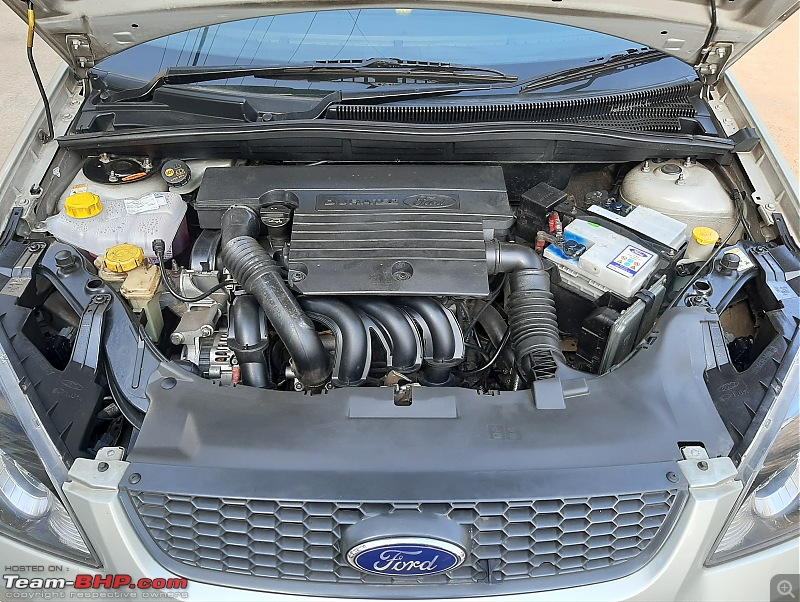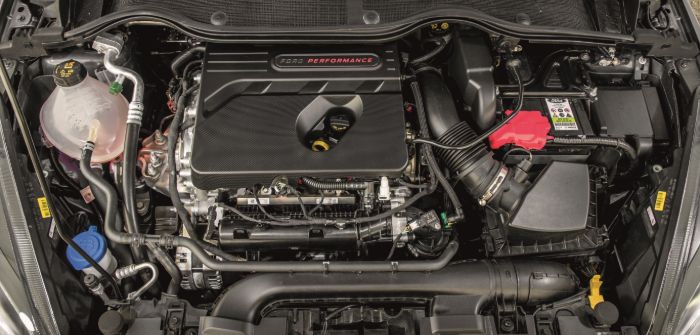Exploring the Benefits of a High-Performance Ford Fiesta Engine
Exploring the Benefits of a High-Performance Ford Fiesta Engine
Blog Article
Discovering the Evolution of Engines: From Classic Styles to Modern Marvels
From the first steam engines that powered the Industrial Change to the emergence of internal combustion engines that transformed flexibility, each phase has contributed to better efficiency and capacity. As we analyze these milestones, one need to consider just how the future of engine style might unfold, testing our understandings of power and effectiveness.
The Birth of Engine Innovation
The arrival of engine innovation noted a critical minute in human advancement, transforming power conversion and transport. The earliest engines arised from the demand to harness mechanical power for useful usage, leading to the growth of gadgets that converted numerous power types right into motion (ford fiesta engine).
The growth of the internal burning engine and the innovation of the vapor engine militarized a profound change in industrial capacities. These engines not just boosted efficiency but also expanded the scope of human movement, making it possible for extraordinary transport possibilities. The early prototypes prepared for the mechanical world, facilitating the increase of industries and improving social structures.
As engine designs developed, they integrated cutting-edge products and advanced engineering principles, leading the means for modern-day advancements - ford fiesta engine. The birth of engine modern technology stired up an unrelenting pursuit of effectiveness and power, setting the stage for the dynamic development of transportation and commercial machinery that would adhere to
Steam Engines and Their Influence

The vapor engine's impact was especially evident in the transportation sector (ford fiesta engine). Steam-powered engines assisted in the fast activity of goods and individuals throughout large distances, effectively shrinking the geographical obstacles that had actually formerly impeded profession and interaction. Steamships revolutionized maritime travel, enabling for quicker and extra trusted crossings of rivers and oceans.
In sector, steam engines powered manufacturing facilities, allowing mass production and the rise of city facilities as hubs of financial task. This shift not just modified labor characteristics yet additionally added to the introduction of a consumer-driven society. Vapor technology fostered advancements in engineering and production processes, laying the foundation for future advancements in engine design. The tradition of heavy steam engines is extensive, mirroring a critical minute in human ingenuity and the relentless search of progress.
The Rise of Inner Combustion
Often overshadowing steam power, the increase of inner burning engines noted a transformative shift in transportation and industry during the late 19th and early 20th centuries. The advancement of these engines, identified by their ability to melt gas within the engine itself, enabled better performance and power contrasted to traditional steam engines. Pioneering inventors such as Nikolaus Otto and Rudolf Diesel played essential duties in refining engine layouts, leading to extensive adoption in cars, watercrafts, and industrial machinery.
The internal burning engine's small dimension and relatively light-weight nature assisted in the appearance of individual cars, changing individual wheelchair and reshaping metropolitan landscapes. By enabling faster traveling and the effective transport of products, these engines catalyzed financial growth and promoted globalization. The adaptability of gas choices, including gas and diesel, additionally improved their charm, permitting for diverse applications throughout various sectors.
Despite the ecological issues that would certainly later on arise, the first attraction of internal combustion technology stocked its transformative potential. As society accepted this development, the foundation was laid for modern transportation systems, developing inner burning engines as a cornerstone of industrial advancement and day-to-day live throughout the 20th century.
Innovations in Engine Effectiveness
As interior burning engines ended up being important to transportation and sector, the emphasis changed in the direction of boosting their effectiveness to meet growing demands for efficiency and sustainability. Innovations in engine layout, material science, and innovation have significantly added to this development.
One major development is the advancement of turbocharging, which allows for raised air consumption, leading to more full fuel burning and boosted power result without increasing the size of engine size. Additionally, variable valve timing systems have actually been carried out to maximize engine performance across different RPM ranges, thus enhancing fuel effectiveness.
The usage of sophisticated gas shot innovations, such as straight injection, has also played a critical role. This approach enables even more accurate control over the fuel-air mixture, advertising better burning and decreasing emissions. Light-weight products, including light weight aluminum and composite components, have been adopted to decrease total engine weight, leading to boosted efficiency.
These advancements show a broader trend within the vehicle market, where the harmony in between design advancement and find more information ecological factors to consider drives the continuous pursuit for higher performance in interior combustion engines. Therefore, modern engines are currently a lot more effective, cleaner, and reliable than ever in the past, leading the way for an extra sustainable future in transport.
The Shift to Electric Power
With growing worries over ecological effect and nonrenewable fuel source reliance, the auto industry is experiencing a substantial shift towards electric power. This shift is driven by a mix of technical developments, regulative stress, and altering customer choices. Electric vehicles (EVs) provide an engaging option to conventional inner combustion engines, flaunting lowered greenhouse gas exhausts and reduced operating expense.
The rise of battery innovation has been a video game changer, with lithium-ion batteries becoming a lot more economical and efficient. Boosted power thickness and faster billing capabilities have actually made EVs more useful for daily usage. Governments worldwide are implementing rewards and establishing enthusiastic targets for phasing out fossil fuel cars, therefore speeding Learn More up the fostering of electric power.
As billing infrastructure expands and battery modern technology proceeds to improve, the shift to electrical power is positioned to reshape the vehicle landscape, promoting sustainability and advancement in the years to come. The future of transportation is electric, and the energy is undeniable.
Final Thought
The development of engine modern technology represents a significant trajectory of innovation that has exceptionally affected transportation and market. From the foundational heavy steam engines to the transformative inner combustion engines, each growth has contributed click over here to enhanced wheelchair and financial growth.

Report this page